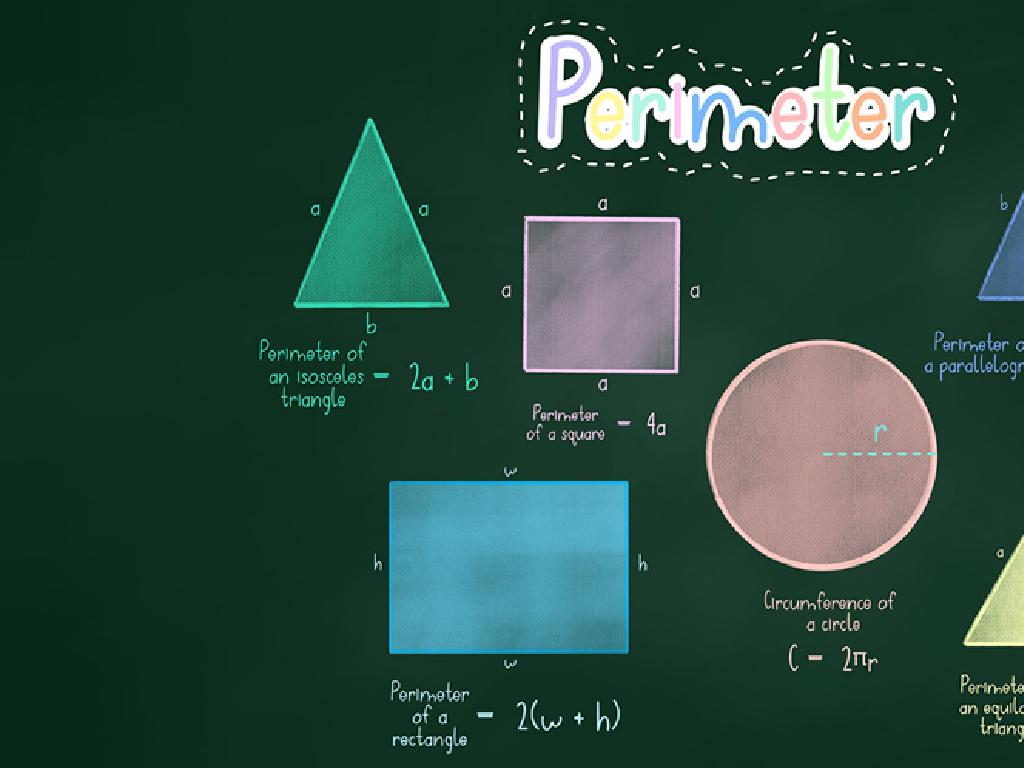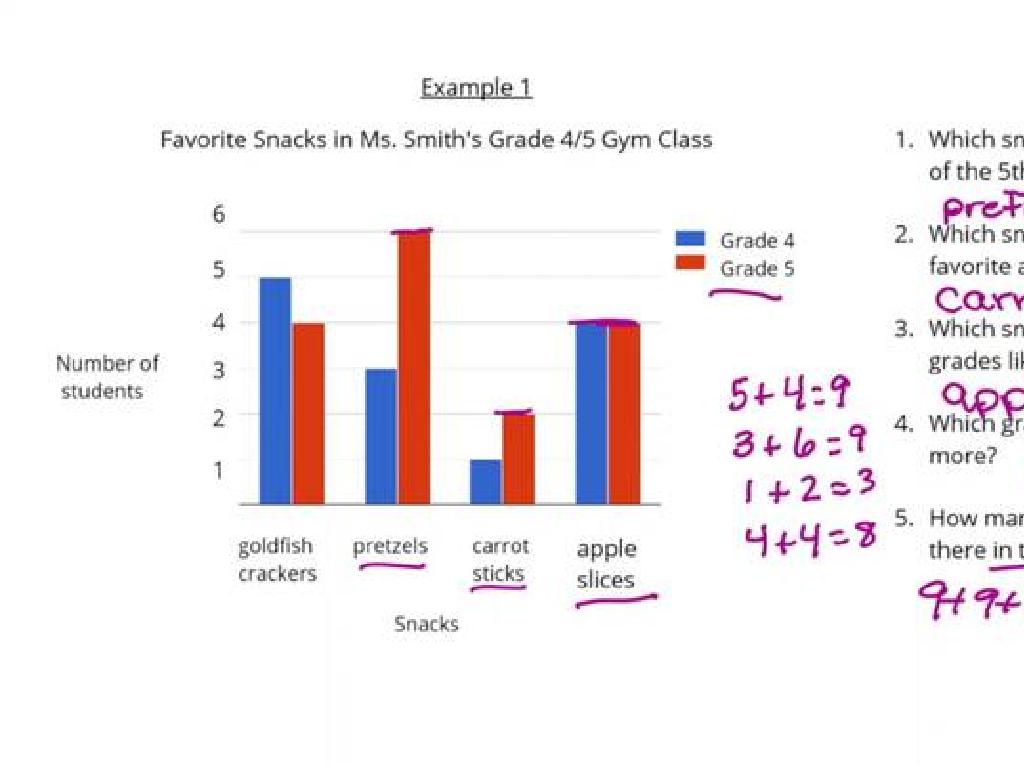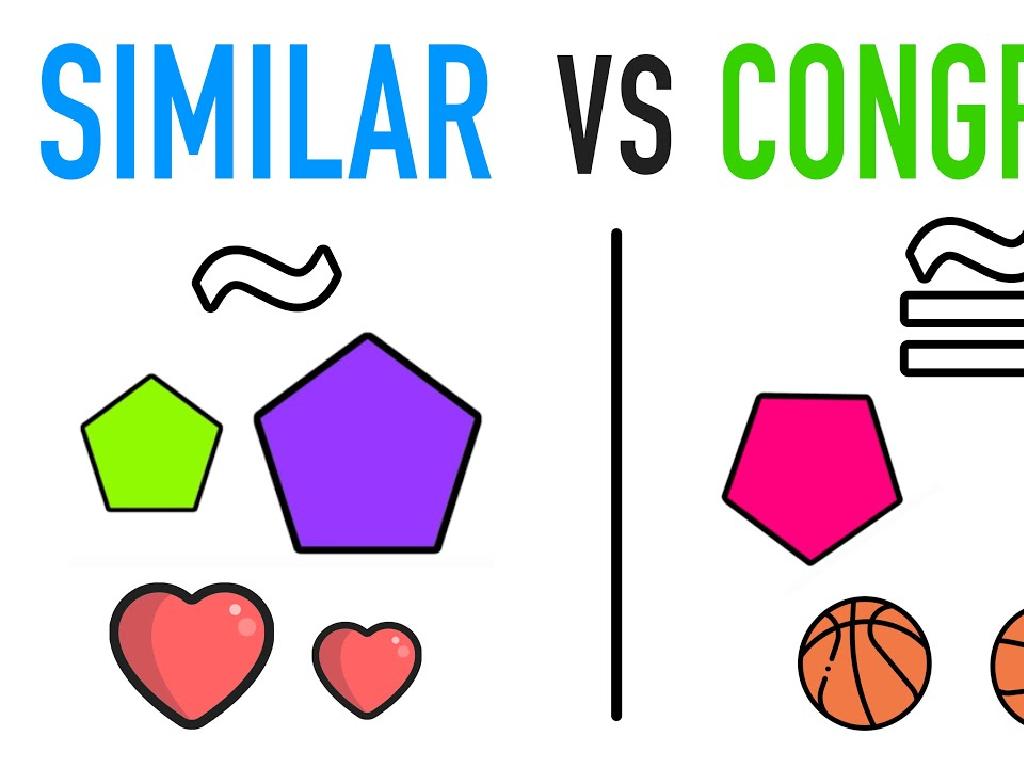Identify Plurals, Singular Possessives, And Plural Possessives
Subject: Language arts
Grade: Third grade
Topic: Nouns
Please LOG IN to download the presentation. Access is available to registered users only.
View More Content
Welcome to Nouns!
– Greeting and topic introduction
– What is a noun? Examples included
– Person, place, thing, or idea, e.g., ‘dog’, ‘school’, ‘happiness’
– Nouns’ role in sentences
– Nouns are the building blocks of sentences; they name everything
– Activity: Identifying nouns
– Find nouns in your favorite book or song
|
Begin the class with a warm welcome and introduce the topic of nouns in Language Arts. Explain that a noun is a word that names a person, place, thing, or idea, providing examples for each category. Emphasize the importance of nouns as they are essential components of sentences, acting as subjects or objects. To reinforce the lesson, engage the students in an activity where they identify nouns from their favorite books or songs. This will help them apply the concept of nouns to familiar contexts, making the learning process more relatable and enjoyable.
Singular and Plural Nouns
– What are singular nouns?
– A singular noun names one person, place, or thing, e.g., ‘dog’, ‘teacher’, ‘school’.
– Forming plural nouns
– Add ‘s’ or ‘es’ to make most nouns plural, e.g., ‘dogs’, ‘teachers’, ‘schools’.
– Examples of singular and plural
– Singular: ‘cat’, ‘leaf’. Plural: ‘cats’, ‘leaves’. Notice the change from ‘f’ to ‘ves’!
– Class practice: Find the nouns
– We’ll read sentences together and spot the singular and plural nouns.
|
This slide introduces the concept of singular and plural nouns to third-grade students. Begin by explaining that a singular noun refers to one single item, while plural nouns refer to more than one. Show how most plural nouns can be formed by simply adding an ‘s’ or ‘es’ to the singular form. Provide clear examples for both singular and plural forms, and highlight exceptions to the rules, such as changing ‘y’ to ‘ies’ or ‘f’ to ‘ves’. During class practice, engage students with sentences that contain both singular and plural nouns, and ask them to identify and classify the nouns they find. This activity will help reinforce their understanding of the concept.
Making Singular Nouns Plural
– Rules for plural nouns
– Add ‘s’ or ‘es’ to most nouns to make them plural.
– Irregular plural nouns
– Some nouns change spelling completely when plural.
– Interactive plural game
– Turn singular nouns to plural and earn points!
|
This slide introduces the concept of pluralization of nouns. Start by explaining the basic rule of adding ‘s’ or ‘es’ to make most singular nouns plural, such as ‘cat’ to ‘cats’ and ‘bus’ to ‘buses’. Then, discuss irregular plurals that do not follow the standard rules, like ‘mouse’ to ‘mice’ and ‘child’ to ‘children’. Engage the students with an interactive game where they transform provided singular nouns into plurals. This activity will help reinforce their understanding of the rules and irregularities in a fun and engaging way. Prepare a list of singular nouns for the game, ensuring a mix of regular and irregular nouns to challenge the students.
Singular Possessive Nouns
– What are possessive nouns?
– Possessive nouns tell us who owns something.
– Forming singular possessives
– Add ‘s to a noun to make it possessive.
– Practice with possessives
– Turn ‘dog’ into ‘dog’s toy’ to show the toy belongs to the dog.
– Showing ownership
|
This slide introduces singular possessive nouns to third-grade students. Begin by explaining that possessive nouns show ownership or that something belongs to someone or something. Demonstrate how to form singular possessive nouns by adding an apostrophe and ‘s’ to the end of a singular noun. For example, ‘the toy of the dog’ becomes ‘the dog’s toy.’ Provide students with practice sentences where they have to write the singular possessive form of given nouns. Emphasize that the apostrophe is key to showing possession and that without it, the meaning of the sentence can change. Encourage students to think of items they own and how they would write that in a sentence to show possession.
Mastering Plural Possessive Nouns
– Forming possessive nouns from plurals
– Add ‘s to the end of plural nouns to show possession
– Apostrophe placement for plurals
– Regular plurals end in ‘s’, add only an apostrophe
– Regular vs. irregular plural possessives
– For irregular plurals not ending in ‘s’, add ‘s
– Group activity with plural possessives
|
This slide aims to teach students how to correctly form possessive nouns from plural nouns. Emphasize that for regular plural nouns ending in ‘s’, we simply add an apostrophe at the end to make them possessive (e.g., dogs’ bones). However, for irregular plurals that do not end in ‘s’, we add ‘s to the end (e.g., children’s toys). During the group activity, encourage students to think of plural nouns and turn them into possessive nouns, then use them in sentences. This will help solidify their understanding of possessive noun usage. Provide guidance and examples on the board for students to refer to during the activity.
Let’s Practice Nouns!
– Review noun rules together
– Plurals add ‘s’, possessives add ‘s with an apostrophe
– Interactive noun quiz
– Use a fun quiz to identify noun types
– Correct nouns in sentences
– Find and fix mistakes in example sentences
– Encourage and give feedback
|
This slide is for an interactive class activity focused on reinforcing the rules for plurals, singular possessives, and plural possessives. Begin by reviewing the rules: plurals usually add ‘s’ or ‘es’, singular possessives add an apostrophe followed by ‘s’, and plural possessives add an apostrophe after the ‘s’ if the word already ends in ‘s’. Use an interactive quiz format to engage the students, asking them to identify and correct nouns in given sentences. Encourage all students to participate and provide immediate positive feedback or gentle corrections to foster a supportive learning environment. Prepare several example sentences for the quiz and consider using a reward system for correct answers to motivate the students.
Class Activity: Noun Scavenger Hunt
– Understand scavenger hunt rules
– Find objects and write different forms
– For each object, write singular, plural, and both possessive forms
– Share findings with the class
– Discuss challenging nouns
– Talk about nouns that didn’t follow usual rules
|
This activity is designed to help students apply their knowledge of nouns in a fun and interactive way. Begin by explaining the rules: students must search the classroom for objects and write down the singular, plural, and both singular and plural possessive forms of the nouns these objects represent. After the hunt, students will share their lists with the class. This will allow for a discussion on any nouns that were particularly challenging or didn’t follow the standard rules for pluralization or possession. For example, the word ‘child’ becomes ‘children’ in plural form, which is irregular, and ‘child’s’ for singular possessive. Prepare to offer guidance and clarification as needed. Possible variations of the activity could include working in pairs, setting a time limit, or categorizing the nouns found.
Wrapping Up: Nouns and Homework
– Recap: Plurals and Possessives
– Homework: 10 mixed sentences
– Create sentences with different noun forms
– Use plurals, singular & plural possessives
– Show ownership with possessives in sentences
– Next class: Types of Nouns
|
As we conclude today’s lesson, remind the students about the different forms of nouns we’ve learned: plurals (more than one item), singular possessives (one owner), and plural possessives (multiple owners). For homework, they should write 10 sentences that include a mix of these noun forms to reinforce their understanding. Encourage creativity and the use of vocabulary from the lesson. In the next class, we will delve into different types of nouns, expanding our knowledge of how nouns function in sentences. Make sure to check the homework at the beginning of the next class to ensure understanding and to provide additional support where needed.






